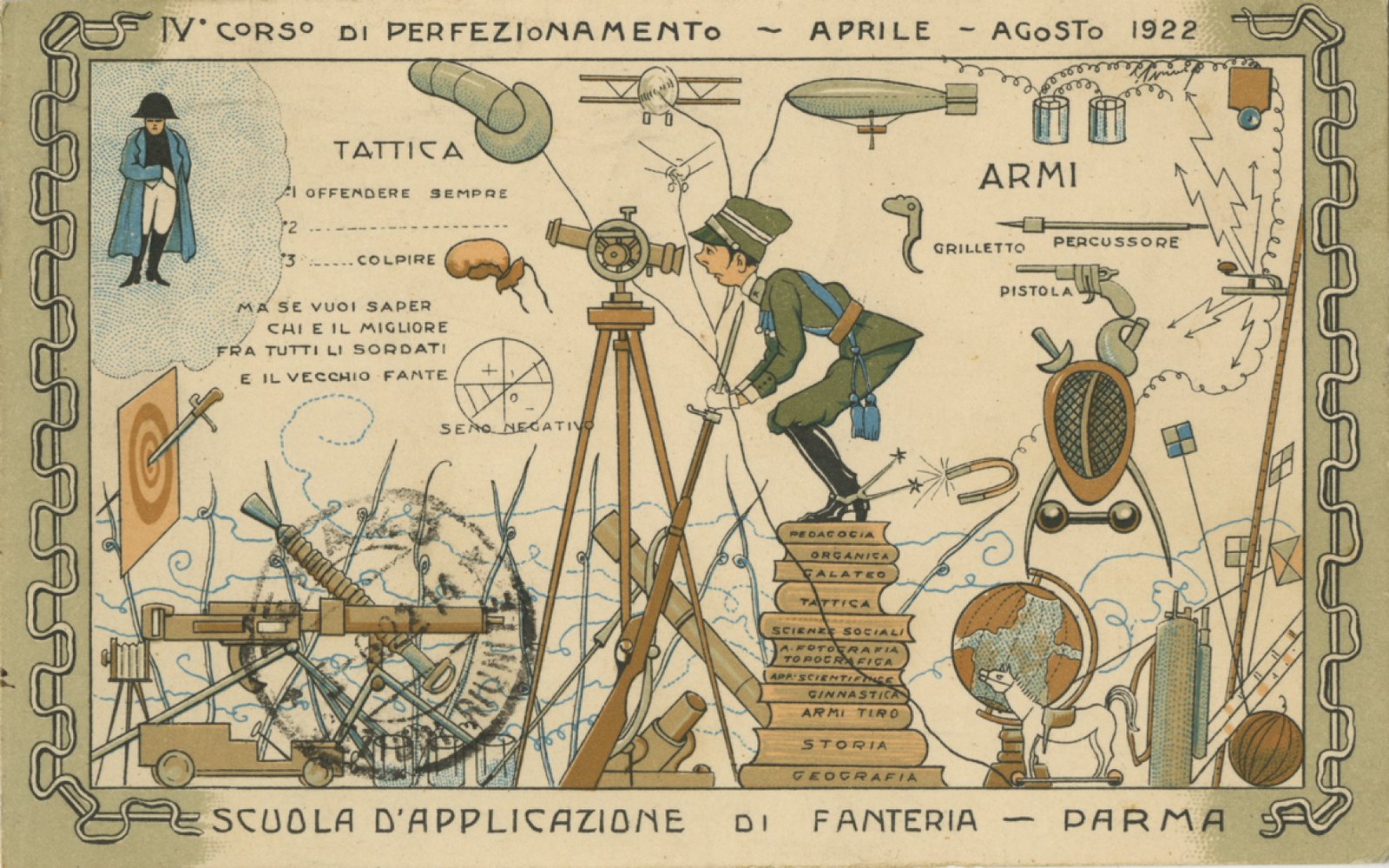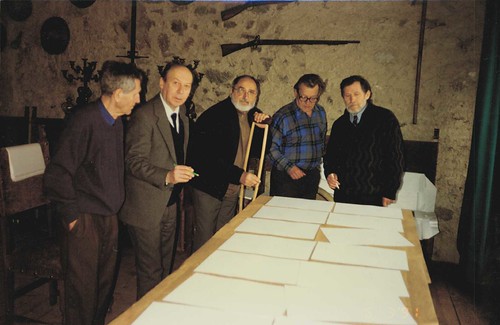Browse Exhibits (11 total)
“The notebook of unrealized art”. Pablo Echaurren thinks of Marcel Duchamp.
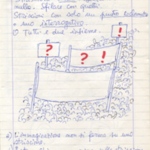
This exhibition has been created thanks to the donation of some of Pablo Echaurren's unrealized projects to MoRE Museum. The artist had previously collaborated with the museum of the unrealized works, once in 2019 thanks to an initial donation Artisti coraggiosi Natura Morta - 2 (1971-1974) curated by Raffaella Perna, and later in 2021 with participation in the conference Lockdown of the project together with Cristina Casero.
This virtual exhibition “The notebook of unrealized art”. Pablo Echaurren thinks of Marcel Duchamphas made it possible to create another collaboration between MoRE Museum and MAMbo, the Museum of Modern Art of Bologna, which at the same time opens a solo exhibition in the Pablo Echaurren project room curated by Sara De Chiara.
If the exhibition hosted by the Bologna Museum aims to investigate the relationship between Echaurren and the city of Bologna by focusing on a central date (for both) such as 1977, the virtual exhibition abandons the artist's political approach to investigate less known aspects revolving around Marcel Duchamp.
As already underlined by Cristina Casero and Raffaella Perna, it is possible to understand the work of Pablo Echaurren as the "negation of the work as a fetish".
This line of interpretation (in addition to connoting the artist's work in a direction of Duchampian aesthetics) finds fertile ground in the whole design of the museum of unrealized works
Although Duchamp has been an important figure for the artist (indeed he dedicated numerous projects to him, including realized ones), Duchamp and Echaurren never met. However, their virtual meeting was possible through two important figures, Gianfranco Baruchello and Arturo Schwarz.
The interpretation of Echaurren’s works through the filter of this political activity is indeed now consolidated as it has been investigated considering the projects with Indiani metropolitani, his pollical activism, and his collaboration with the newspaper Lotta Continua.
The intention of this virtual exhibition, to give a different interpretation to the MAMbo exhibition, is to highlight the several aspects that relate to the two artists and that makes Echaurren reflect on the most hidden aspects of the famous French artist.
Echaurren's production is rich and heterogeneous, ranging from painting, illustration, comics, ceramics, record covers, and over fifty books, including “Duchamp politique”. In this book, Echaurren explores the French artist's work on an existential level, the anti-system one that is the Duchamp who rejected the art market.
Even before the publication of this book, in 1977 Echaurren wrote “Dall’io al noi. Da Duchamp a Duchamps. U/siamo tutti Duchamp. Non è una questione di eleggere un oggetto ad un’opera d’arte (ready made). Questa è una mistificazione del mercato che cerca oggetti da vendere e totemizzare. Non è questione di eleggere un oggetto ad opera d’arte stessa (la sua funzione di feticcio) in un oggetto di uso comune”. [1] This phrase, already quoted by Raffaella Perna, confirms Echaurren's interest in Marcel Duchamp. The French artist becomes a sort of fil rouge for most of Echaurren's works.
In fact, there are many projects in which Echaurren reinterprets Duchamp (not only through the magnifying glass of the ready-made) but rather a Duchamp far from the art market and from the idea of a work of art as a fetish, a more cerebral Duchamp who sheds his persona to offer himself to the Roman artist almost in a private space.
This exhibition, therefore, moves on these assumptions and wants to explore this lesser-known aspect of the artist. Research that goes beyond the usual political approach and wants to enhance a group of projects in which Duchamp is a point of reference. The exhibition is therefore composed of a small selection of unrealized works where emerges the desire to not adhere to the Duchampian language of the ready-made, but rather to a Duchampian ethic of artistic work, if it can be defined as such.
Therefore, the virtual exhibition starts with few pages of a notebook, almost all of Echaurren's projects have been conceived on this medium. These pages return notes written before drawings, they are transcribed ideas that bring out the artist's design methodology which is based first of all on writing.
In the booklet of 1977, a fundamental date for the artist as he decided to retire from the art world, we read the title of a page “Il quaderno dell’arte non fatta. Solo pensata. Solo appuntata” (“The notebook of unrealized art. Only thought. Only written down”).
The notebook is divided into various writings and on the second page already emerge the figure of Duchamp and the practice of the Exquisite Corpse, which is taken as a model of a project where authorship is lost.
Anyway, not many unrealized projects surface from the booklet, but only one in which Duchamp is still a key figure. In fact, Echaurren wants to dedicate a sort of parade to the French artist through the creation of silent banners (without any writing), or through banners showing the question or exclamation mark only. This project is a sort of conceptual parade that reflects the French artist’s work.
The third project is based on Duchamp's famous ready-made Bicycle Wheel, which is sketched with a blue pen on a piece of paper. En attendant la mariée (2012) consists of a written and a drawn part, the drawing shows a complex installation project built with a bicycle wheel, a spinning wheel and a system of threads coming down from the ceiling through chrysalises.
The fourth work is entitled Monumento fortuito (2015), realized with a blue pen on a squared sheet, without drawings or notes of a different nature. The project is written only. Eucharren wants to create a monument for the French artist through "a leftover, a human waste" found on the street.
The last two project are two small sculptures: the first one is Mon Alice (2018), a plastic figurine of "Alice from Wonderland" with a mustache drawn in ink, clearly quoting Duchamp's work on the Mona Lisa; while the second work is a small sculpture of a monkey with an iron, the design quotes Duchamp's famous phrase of using a Rembrandt as an ironing board. The first title clearly shows the quote and shows how Echaurren works on a famous contemporary icon of Disney world, following a path already traced by the French artist.
These works highlight how important it is for Echaurren to work on a continuous rethinking of Duchampian themes.
This exhibition starts from the first youthful project of 1977 to move drastically to the last decades, this sudden leap shows how the French artist always remains a pivotal node. Echaurren approaches and reflects on all the elements that punctuate Duchamp's work: from the ready-made to the masculine and feminine shift. He also touches on his famous exhibitions such as the International Surrealist Exhibition held in New York (1942).
[1] Pablo Echaurren, from the notebook Macchine coniugi, Duchamp, Flussi, 1977, preserved at the Fondazione Echaurren Salaris, Roma.
MoRE Curators
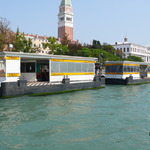
Since its opening, MoRE decided to confront and collaborate with external curators, who have been invited to select the artists and to present unrealised projects: it all started with the involvement of Elisabetta Longari, then in the following years it continued with the collaborations with Letizia de Felice, Gianni Romano and Elena Lydia Scipioni, until at the recent exhibition curated by Luca Vitone, the first own entrusted to an artist.
In this way the digital museum chose to build its own collection thanks to a direct relationship with the artists, but also through a network of relationships with independent curators and with various institutions ranging from museums to archives, from art fairs to research centers and independent spaces. During all these years a genuine network of curators, art historians and experts was established around MoRE, who contributed to the project in several ways.
With MoRE Curators we have decided to dedicate a virtual exhibition to eight unrealized projects, presented by as many curators, invited for the occasion with the aim of continuing with this particular practice of involving professionals who are usually external to the museum.
These people, a group of curators who can be considered heterogeneous both considering their practices and in relation to the context where they operate, have been called to question themselves and to provide new hypotheses on the theme of the unrealised, in order to present inside the exhibition a reflection on the unrealised project as an integral part of the artistic process, and more generally on the art system and its dynamics.
The result is an exhibition that deals with the work of the artist from different perspectives, broadening the view on profoundly different practices: these includes historicized artworks, such as those by Gianfranco Baruchello and Pablo Echuarren respectively proposed by Simone Ciglia - contemporary art historian and assistant researcher at MAXXI, Rome - and Raffaella Perna - research fellow at the University of Rome La Sapienza; interventions that should have led to real paths, like the one designed for a street in Milan by Benni Bosetto and selected by the independent curator Antonio Grulli, or the one that should have been realised in St. Gallen by Helen Mirra, proposed by Christiane Rekade, curator and artistic director of Kunst Meran Merano Arte. But we can also find projects designed for the public space, like the one proposed for a collateral event of the 2009 Venice Biennale by Emily Jacir, then subject of a form of censorship and here selected by the curator of the Kunsthalle Wien Luca Lo Pinto, or the unrealised urban art project by Ericailcane, commissioned by the Frontier festival for the Bologna Gasometer and selected by Claudio Musso and Fabiola Naldi, and the works of Alessandro Sambini - presented by the independent curator Elena Forin - for Milan and Trieste, never realised because they were not selected in a competition or simply for no specific reason. There are even projects commissioned for a specific occasion, such as the one Wendy White proposed for an exhibition for the Rolls Royce Art Programme, an initiative of the famous car manufacturer.
A lot things come along this trail: clients, processes, design methods and profoundly different motivations, research models and case studies that try to look at contemporary art in a diachronic way, through the lens of the unrealized.
Daily exercises. Curated by Luca Vitone
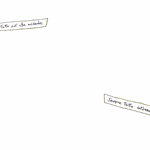
Luca Vitone
The charm of the unrealised
Writing about unrealised artworks has its own charm. First of all, we talk about these projects only virtually, we don't have a finished object and we know that an artist while in the process of making has got the time to think and follow day by day the formation of the artwork, with the possibility of changing some details when he believes it is better to modify something. Then we will never be able to see a finished object, which remains present only in the mind of the artist, but only sketches prepared for the presentation of the project. Sometimes these changes are not just the result of artistic desires, but are also related to the needs of the client and to the feasibility of the project, which is verified in progress and depends on economic or logistical reasons.
In our case the artists invited for this exhibition have given us different reasons to justify the non-realisation of their projects and these reasons help us to understand the different ways and why an artwork is – or is not – realized.
But let's look at these cases one by one and try to offer a reflection on making art.
Mark Dion presents a pharaonic project, which reminds us of Giovanni Segantini's unrealized one for the Exposition Universelle of 1889 in Paris. A pavilion designed for the centenary of a park, that should have contained various cultural institutions that represent its activities. In this case the project had not accepted by the judging commission and its memory remains thanks to a series of drawings and an articulated text, which tells us the reasons and merits of this idea, unfortunately still only on paper.
Maria Eichhorn does not tell us if her project started from the request of a client or if it is simply the result of her work in the studio. She simply proposes us an architectural project of some degree of consistency that has not been realized for unknown reasons. Probably the panoramic tower has never found the right occasion to be proposed, or maybe the artist, considering that the financial commitment for its realization would have been conspicuous, has decided to postpone it, while distracted by the necessity to finish other already confirmed artworks.
For Till Krause the situation is slightly different. He declares that he designed his project independently and then submitted it to a jury that did not accept it. It is of particular interest that Till then adds in his report that the project has not been realized also because "I didn’t try hard enough". This is an interesting statement because it shows us the sincere awareness of his own responsibility, an attitude that is not so common in general among humans and most of all in the spirit of the artist.
Daniel Maier-Reimer, following his methodology, proposes a journey across the sea, but the MMCA (National Museum of Modern and Contemporary Art) rejected his proposal. In this case the artist, following the iconoclastic modalities he adopts for the presentation of his artworks, does not present us with drawings, itineraries, maps and images, so that everything remains in the mind of the creator and we just have less than half a dozen written lines that allow us to imagine it. Here the artist keeps everything for himself and leaves us alone with the possibility of fantasizing about what he would have seen and what he would have brought us as a result of his work.
Veit Stratmann proposes a work that he says has been "designed not to be realized". Here is an unusual statement; but this abnormality makes us think about the themes put forward by the author: safety, control, ecology and good conscience. All these arguments concern us and according to the ideology we follow can produce very different and sometimes opposite reactions. Here is the impossibilty of putting the work into practice, which with its absence reveals this idiosyncrasy of the terms, which according to an ideological interpretation manifests the vulnerability of the thought.
Cesare Viel presents a project that has evaporated during its own development for economic reasons and above all because when it was initially designed no specific client had been identified. Two airplanes that, while flying, show us two sentences (a usual practice for the artist) that make us reflect on our state and on what surrounds us. A reflection that makes us understand how in the moment of the elaboration of an idea everything is volatile and its realization depends on our will, but also on the opportunities that are offered us.
These materials are witness of a very important way of doing for an artist: designing the artwork beyond its realization. It is not entirely important that the artwork has been realized, the important thing is to imagine it and to sediment it with a project, because this is the daily exercise that an artist has to carry out so that he can set in motion his own practice, useful for the realization of finished artworks.
MoRE has the merit of collecting materials that would have remained inside a drawer and that would have never been known, excluding a personal attendance at the artist studio, but mainly it has the important function of making the artist’s working procedures well-known to a wider public, presenting objects that would never have been known, beyond the notoriety that an artist could achieve.
Here is the fascination that we started with: the possibility of accessing the most unknown design places inside the mind of an artist who, with notes, sketches and drawings testifies to his artistic progress.
Berlin, March 23rd 2019
Proposals, dreams and utopias from Zagreb. A selection of unrealized and refused art projects by MoRE Museum

The exhibition, both online and at the MSU in Zagreb (November 9-December 8 2018) was conceived starting from the residency held last spring, when the curators of MoRE a Museum of refused and unrealized art project - were invited by the MSU to explore the city contemporary art scene.
During the residency, many unrealized projects, from the 1950's to the present day were discovered in the archives and the artists’ studios.
During the residency, many unrealized projects from the 1950s to the present day were discovered in the archives and artists’ studios. Thanks to the interactivity of the physical and digital exhibitions, it will be possible to discover works like Total Portrait of the City of Zagreb (1979) by Tomislav Gotovac (Sombor 1937 - Zagreb 2010), a draft of a documentary screenplay about the city of Zagreb, The lost pavillion, an unbuilt pavillion by David Maljković (Rijeka, 1973) for the city of Lyon, and a proposal by Petar Dabac (Zagreb, 1942) for an unbuilt museum in Zagreb dedicated to photography (Muzej za fotografiju - Museum of Photography 1986). There will also be several conceptual projects by Vlado Martek (Zagreb, 1951) which stand halfway between linguistic and visual research, such as Ambivalentna tautologija (2013-2014) and Ništa (2015), two unrealized videos - The Moons (2011), in which the artist intended to document the existence of a second moon, and The Room (2009), a stop-motion video on a spritualist séance by Marko Tadić (Sisak, 1979) and Lithopuncture (2004), a project for a series of urban sculptures by Marko Pogačnik. The last was part of "Urban Intervention", a project organised by the Sirius Centre and promoted by the MSU, partially conserved in Lake Jarun Park in Zagreb, while some elements in the city centre were removed or relocated several years later.
Two well-known historical projects are also exhibited: the Yugoslavian Pavilion designed but not realized for the Paris Exposition in 1950, the result of a collective design process by Ivan Picelj (Okučani, 1924 - Zagreb, 2011), Zvonimir Radić (Zagreb 1921 - 1985), Vjenceslav Richter (Drenova, 1917 - Zagreb, 2002) and Aleksandar Srnec (Zagreb, 1924 - 2010) and Synthurbanism, Richter's visionary project of the '50s and '60s.
Unrealised Paintings
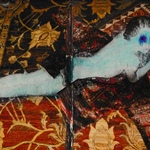
The desire to create a small virtual exhibition of unrealised pictorial projects stems from the need to analyse the pictorial medium within the contemporary artistic production. Five years ago we started the MoRE Museum project and in this time we have collected about one hundred unfinished works, all designed to be performances, installations, videos and sculptures. After years of work, my research as a curator at MoRE wants to address the art of painting, with the aim of understanding (through various acquisitions structured into several outputs) how the artistic discipline par excellence is "designed" - if I am allowed to use this term - and how, in some cases, it fails to become a reality.
Liliana Moro. A place for playing Unrealized projects 2002-2009.
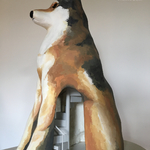
This exhibition presents four unrealised projects by Liliana Moro, conceived between 2002 and 2009 for several public art competitions and commission in Italy.
Here they are presented in chronological order: In bocca al lupo (2002); Testa di Pinocchio (2003); Viene e va (2005); Preferisco il rumore del mare, Concorso di progettazione Piazza Verdi - La Spezia (2009).
When public remains private. Unrealised projects by Luca Vitone

This exhibition presents four unrealised projects by Luca Vitone, conceived between 2002 and 2010 for several public art competitions, three in Italy and one in Germany. Here they are presented in chronological order: Una tigre per Torino, project for the competition Premio ArteGiovane - Torino incontra l’arte. Una porta per Torino, 2002; Design competition for Piazza Verdi – La Spezia with Frank Boehm, 2009; Concorso per la progettazione di un monumento dedicato ai disertori del nazismo, Cologne, 2009; Foglie al vento, project for the competition Arte per piazza Matteotti - Imola (Bo), 2010.
Evidence of absences

A show that exists but isn't there
In the term "unrealized" there is a space between the particle ‘un-’ and the verb: the projects that are donated to MoRE, which aims to archive, guard, disseminate and possibly relaunch said works, fall into a place of suspension, between surrender and waiting. Regardless of the cause, an unconcluded project lives in a undetermined condition: it exists but isn’t really there.
We tend to give a negative connotation to all that remains unfinished, unfulfilled, not built (even not said), because it reminds us of a loss in terms of opportunity, energy, of an object, an intangible asset, the loss of a value. A loss - a term used in physics, geography and technology, in medicine, in economics and the military - doesn’t necessarily entail a disaster, although it is very close to one. During the 80s, when Vito Acconci started to focus his attention on environmental and architectural projects, reaching extreme limits in his research on body and space, his ultimate goal was never its fulfilment. "I don’t even know if I can say that our goal was to build projects. If that was our goal, then we’ve clearly failed". In planning and the “unbuildable”, Acconci sees the possibility to re-examine not the past but the 'things that have yet to come'. It is as if, without the pressure to be successful at all costs, the energy invested in an unrealized project flows towards different directions leading to new ideas and outcomes.
Two artists I had invited to donate a project refused to do so. Their motives can be summarized as follows: not all projects contain a medium to high risk margin and the artist's tenacity is crucial; The artist ends up with a work and inferior ideas die in the process.
The strength of Vladimir Tatlin's Monument at the Third International (1920), lies in its being more than its actual existence, in the insights that the project contained - first and foremost that art should be informative - and in general in the Constructivist considerations on sculpture during the 60s (Carl Andre, Dan Flavin, Donald Judd, Sol LeWitt), the architecture, the city (especially in the 80s), and finally the communication between members of the international community. We must therefore continue to regard unrealized projects as bearers of aesthetic values, as editable, able to be rethought and versatile. And especially in this day and age, shareable.
The Aeromodeller (1969-1971) conceived by Panamarenko was never launched: when on June 6 1971, the artist and a group of assistants began to fill the balloon with hydrogen gas, the goal was to fly the airship from the fields outside of Antwerp. The danger of an explosion from the highly inflammable gases was aggravated by the blustering wind and by the balloon's constant flipping broadside into the gale due to certain navigational limitations of the design. Fearing a full-on disaster, Panamarenko with a pair of scissors slashed into the balloon to release the dangerous gases. In this last example, the risk of not succeeding is very much part of the project and the non-operational nature of the artist's flight device can be read as part of its intended beauty.
The residency of Gorgona in Brunnenburg
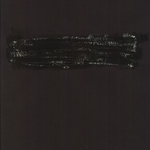
In March 1991 the collector and publisher Francesco Conz, in collaboration with the Muzej Suvremene Umjetnosti - MSU of Zagreb, invited a few artists who had been part of Gorgona, the Croatian Croatian avant-garde group active between 1959 and 1961, to an artistic residency at the castle of Brunnenburg in Merano, Italy.
During their residency, the five artists created thirteen works of art as well as fifteen hand-made copies of each work. All of which were created on the same size of paper (30x42 cm), as used by the artists who participated in the residencies for La Livre edition.
However, contrary to their initial intentions, the group distanced itself from Ezra Pound because of the possible political implications conveyed by his figure. Neither La Livre nor any single issue that should have included the works created by the artists of Gorgona during their residency were ever completed and therefore published.
Seven Artists for AGEOP (Association for the assistance and the reception of children affected by cancer and leukemia)
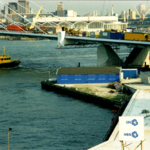
The project involves seven artists who were invited in 2004 by curator and art historian Roberto Daolio (1948-2013) to realize a series of art works to be placed on the top floor of the new Department of Pediatric Oncology in Sant’Orsola Hospital in Bologna, in collaboration with the Association AGEOP (Association for the assistance and the reception of children affected by cancer and leukemia).
The invited artist were Silvia Cini, Emilio Fantin, Claudia Losi, Eva Marisaldi, Sabrina Mezzaqui, Sabrina Torelli and Marco Vaglieri.
The project will never be completed, however it was presented in an exhibition, SPA SALUS per ARTE at the Open Space for Arts of the GAM in Bologna (16th June to 5th September 2004) and published in a catalogue.

